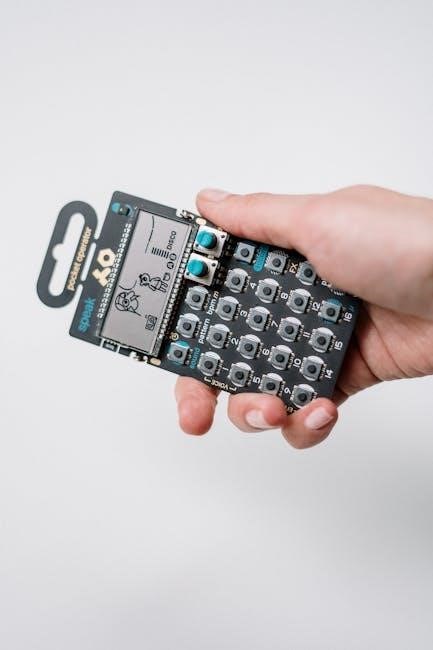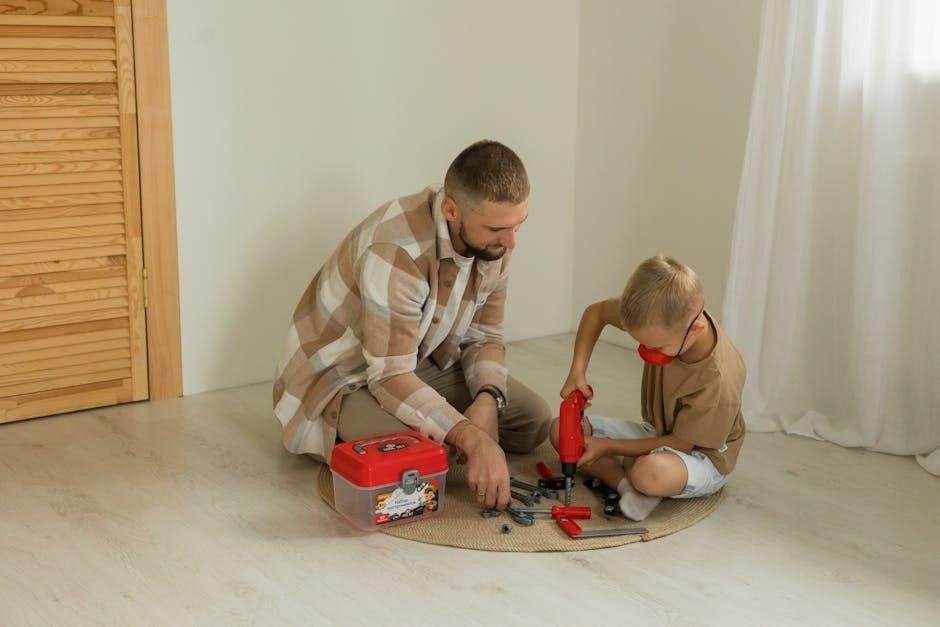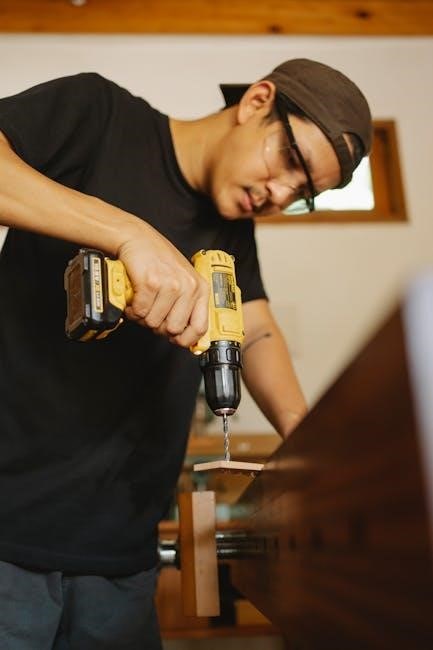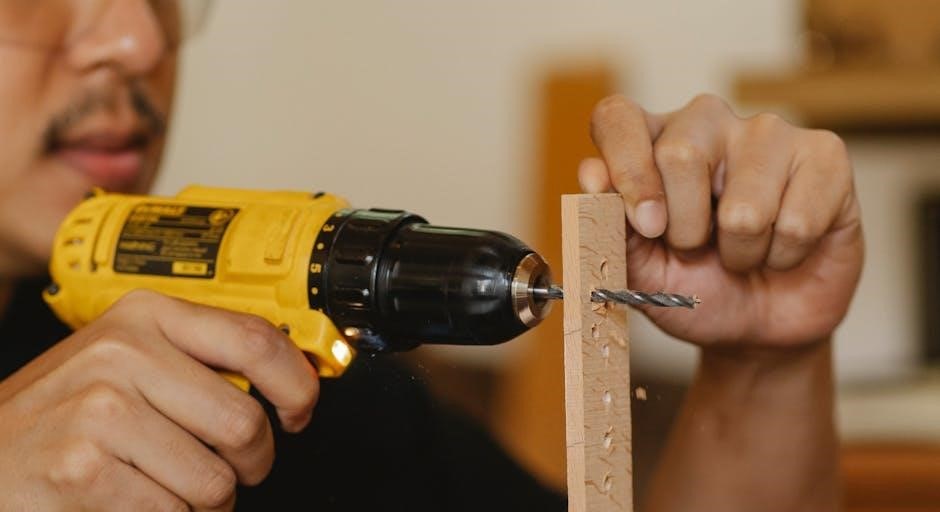The Honeywell Equipment Interface Module (EIM) is a versatile device designed to integrate and control HVAC systems, enabling seamless communication between thermostats and heating equipment. It supports various voltage systems and is compatible with advanced thermostats like Prestige and VisionPRO, ensuring efficient home automation. The EIM is essential for optimizing heating solutions and enhancing system performance.
Overview of the Honeywell Equipment Interface Module (EIM)
The Honeywell Equipment Interface Module (EIM) is a advanced control solution designed to interface thermostats with HVAC equipment. It features a relay and antenna for seamless communication and is compatible with systems like Prestige IAQ and VisionPRO. The EIM supports various heating systems, including baseboard heaters, and operates at 120V, 208V, or 240V. Its compact design allows installation in wiring compartments or separate boxes, ensuring flexibility and ease of use.
Key Features and Benefits of the EIM
- Compatible with RedLINK™ accessories for enhanced wireless connectivity.
- Supports multiple thermostat configurations and remote sensor integration.
- Operates with various heating systems, including baseboard and fan-forced heaters.
- Flexible voltage support (120V, 208V, 240V) for diverse applications.
- Compact design allows installation in wiring compartments or separate boxes.
- Ensures reliable communication between thermostats and HVAC equipment.
- Enhances system efficiency and user convenience with advanced controls.

Installation and Setup
The Honeywell EIM requires careful installation by trained technicians, ensuring proper mounting in a wiring compartment or DIN rail, and adhering to safety guidelines to prevent hazards.
Preparation for Installation
Before installing the Honeywell EIM, ensure the power supply is disconnected to avoid hazards. Review the installation manual thoroughly and verify compatibility with your HVAC system. Mounting options include wiring compartments or DIN rails, ensuring secure placement. Check the package contents for all necessary components. Gather required tools like screwdrivers and voltage testers for a smooth setup process.
Step-by-Step Installation Instructions
Begin by disconnecting power to the control panel for safety. Mount the EIM in an accessible location, such as a wiring compartment or DIN rail. Connect the thermostat to the C and R terminals on the EIM, ensuring secure wire connections. Next, link the thermostat to the EIM following the manual’s instructions. Finally, configure the settings using the EIM menu and test the system to ensure proper operation.
Mounting Options and Requirements
The Honeywell EIM offers versatile mounting options, including installation in the wiring compartment of a baseboard heater, on a DIN rail, or in a 4-inch square electrical box. Ensure the box has a minimum depth of 21/8 inches. For multiple EIMs, maintain at least 2 feet of separation. All wiring must comply with local electrical codes for safe and reliable operation.
Wiring and Electrical Connections
The Honeywell EIM supports 120-, 208-, and 240-volt systems, requiring proper wiring to ensure safe and efficient operation. Always disconnect power before installation and follow local electrical codes for secure connections. The module can be installed in the wiring compartment or a 4-inch square electrical box with adequate depth.
Understanding the Wiring Diagram
The wiring diagram for the Honeywell EIM provides a clear visual guide for connecting the relay and antenna. It supports 120-, 208-, and 240-volt systems, ensuring compatibility with various setups. Proper installation requires adhering to local electrical codes and mounting in a 4-inch box. Referencing the diagram ensures all components are correctly connected for safe and efficient operation.
Connecting the EIM to the Control Panel
To connect the EIM to the control panel, ensure the power is disconnected first. Mount the module in a 4-inch box and connect the C and R terminals to the thermostat. Follow the installation manual for specific wiring instructions. Proper setup ensures seamless communication between the EIM and thermostat, optimizing system performance and control.
Power Requirements and Safety Precautions
The Honeywell EIM requires a 24V AC power supply. Proper grounding is essential for safe operation. Disconnect power before installation or servicing to prevent electrical hazards. Follow the manual’s safety guidelines to avoid damage or injury. Ensure compliance with local wiring standards for a secure and efficient installation. Always refer to the manual for detailed instructions and safety protocols.

Configuration and Programming
The EIM offers intuitive menu navigation for thermostat setup and RedLINK accessory configuration. It streamlines HVAC automation and enhances system performance through advanced programming options.
Navigating the EIM Menu System
The EIM menu system is user-friendly, offering clear options for installers to configure settings. It provides step-by-step guidance for setting up thermostats, wireless accessories, and RedLINK devices. The menu allows easy navigation through installation parameters, ensuring proper system integration. On-screen instructions simplify the process, enabling efficient setup and customization of HVAC controls for optimal performance.
Setting Up Thermostat and Wireless Accessories
Linking the thermostat to the EIM ensures seamless communication. Install wireless accessories like sensors and remotes, then sync them with the EIM. Follow on-screen prompts to configure settings. For multiple EIMs, ensure each thermostat is linked to its specific EIM. Refer to the manual for compatibility with Prestige or VisionPRO thermostats. Proper setup guarantees efficient HVAC control and optimal system performance.
Configuring RedLINK Accessories
Pair RedLINK accessories with the EIM to enable wireless communication. Reset accessories before connecting to ensure proper synchronization. Follow the manual for specific pairing instructions. Each accessory must be linked to its corresponding EIM, especially in multi-EIM setups. Proper configuration ensures seamless operation and optimal performance of your HVAC system. Always refer to the manual for detailed steps and compatibility guidelines.
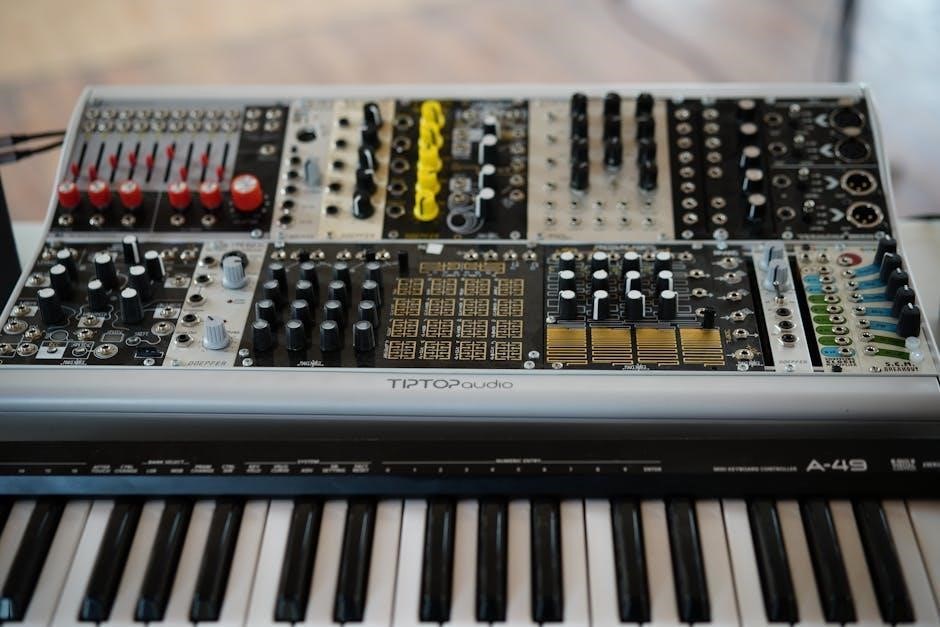
Troubleshooting Common Issues
Diagnose power-related problems by checking connections and ensuring proper voltage; Resolve communication issues by verifying RedLINK accessory pairing and EIM synchronization. Address sensor faults by inspecting wiring and ensuring correct installation. Use diagnostic tools for detailed analysis and consult the manual for step-by-step solutions to restore optimal performance.
Diagnosing Power-Related Problems
Check the power supply to ensure it matches the EIM’s voltage requirements. Verify all connections are secure and free from damage. If the power light doesn’t illuminate, consult the manual for troubleshooting steps. Ensure the circuit breaker or fuse is functioning properly. Use a multimeter to test voltage at the terminals. Refer to the installation guide for detailed diagnostic procedures to resolve power issues effectively.
Resolving Communication Issues Between EIM and Thermostat
Ensure the EIM and thermostat are properly linked during setup. Reset the EIM by disconnecting power for 30 seconds. Verify wireless signals are strong and free from interference. Check for loose or damaged connections between the EIM and thermostat. Consult the manual for synchronization procedures. If issues persist, refer to the troubleshooting section or contact Honeywell support for assistance.
Addressing Sensor and Wiring Faults
Check the power supply to both the EIM and thermostat. Inspect wiring for damage or loose connections. Ensure all sensors are properly installed and configured. Verify continuity in wiring using a multimeter. Replace any faulty sensors or wiring. Refer to the manual for specific troubleshooting steps. If issues persist, reset the EIM or consult Honeywell support for further assistance.

Maintenance and Upkeep
Regularly inspect the EIM’s power supply, wiring, and sensors. Ensure all connections are secure and free from damage. Perform firmware updates as needed.
Regular Maintenance Tasks
Perform routine checks on the EIM’s power supply and wiring to ensure secure connections. Clean dust from components and verify sensor accuracy. Update firmware periodically to maintain optimal performance and security. Inspect for signs of wear or damage. Replace faulty parts promptly to prevent system malfunctions. Schedule annual professional inspections for advanced diagnostics and calibration.
Updating Firmware and Software
Regularly update the EIM’s firmware and software to ensure optimal performance and security. Check the Honeywell website for the latest versions and follow the provided instructions for a smooth update process. This ensures compatibility with new features and maintains system functionality. Always back up settings before updating to prevent data loss.
Replacing or Resetting the EIM
To replace the EIM, disconnect power, remove the old module, and reconnect wiring to the new one. Resetting restores default settings; press and hold the reset button or remove power for 30 seconds. After replacement or reset, reconfigure the system and test functionality. Ensure RedLINK accessories are re-linked to maintain proper operation.

Compatibility and Integration
The Honeywell EIM is compatible with Prestige IAQ, VisionPRO, and RedLINK accessories, ensuring seamless integration with various HVAC systems and voltage requirements (120V, 208V, 240V).
Compatible Thermostats and Systems
The Honeywell EIM works seamlessly with Prestige IAQ, VisionPRO, and RedLINK-enabled thermostats, ensuring efficient control of heating systems. It supports baseboard heaters, convectors, and fan-forced heaters across 120V, 208V, and 240V systems, making it a versatile solution for various HVAC configurations.
Integration with Other Honeywell Products
The Honeywell EIM seamlessly integrates with other Honeywell products, including RedLINK accessories and Prestige IAQ systems, enhancing overall system functionality. It works alongside wireless thermostats and home security devices, ensuring centralized control and optimized performance. This integration allows for advanced features like remote monitoring and efficient energy management, making it a key component in Honeywell’s smart home solutions.
Third-Party System Compatibility
The Honeywell EIM offers compatibility with select third-party systems, allowing integration into diverse home automation setups. While primarily designed for Honeywell products, it can function with other systems supporting similar communication protocols. This flexibility ensures broader functionality and adaptability, making the EIM a versatile choice for various smart home configurations and enhancing its utility across different platforms.

Safety and Compliance
The Honeywell EIM adheres to strict safety guidelines, ensuring compliance with industry standards and regulations. Proper handling and disposal instructions are provided to prevent hazards.
Safety Guidelines for Installation and Use
Always disconnect power to the control panel before installing the EIM. Follow all instructions carefully to avoid damage or hazardous conditions. Ensure proper handling and disposal of the module as per regulatory guidelines to maintain safety and compliance.
Compliance with Industry Standards and Regulations
The Honeywell Equipment Interface Module adheres to industry standards and regulations, ensuring safe and reliable operation. It meets local electrical codes and certifications, making it suitable for various installations. Compliance with these standards guarantees compatibility and performance across different HVAC systems, while also ensuring environmental and safety regulations are upheld.
Handling and Disposal Instructions
Proper handling and disposal of the Honeywell EIM are crucial to ensure environmental safety. Avoid exposing the module to extreme temperatures or physical stress. When disposing, follow local electronic waste regulations to prevent hazardous materials from entering landfills. Recycle responsibly to minimize environmental impact and adhere to eco-friendly practices.
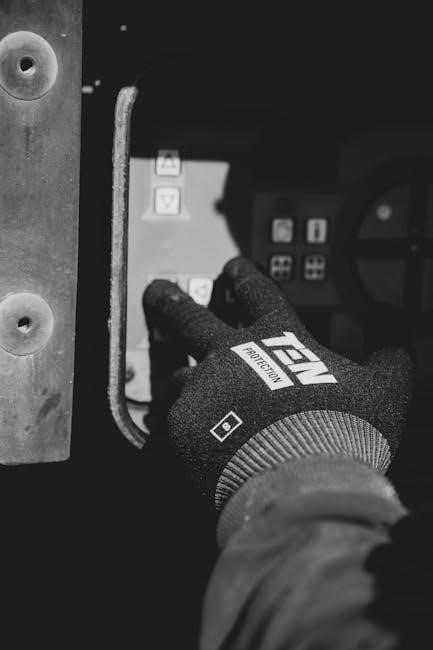
Advanced Features and Customization
The Honeywell EIM offers advanced customization options, allowing users to tailor settings for specific applications. It supports multiple thermostats and integrates seamlessly with RedLINK accessories, ensuring enhanced system control and flexibility for optimized performance.
Customizing EIM Settings for Specific Applications
The Honeywell EIM allows users to customize settings for specific applications, ensuring optimal performance. Advanced features enable configuration of thermostat links, RedLINK accessory integration, and system voltage compatibility. Users can tailor settings for baseboard heaters, convectors, or fan-forced systems, adapting the EIM to meet unique installation requirements. Refer to the manual for detailed steps on custom configuration.
Using the EIM with Multiple Thermostats
The Honeywell EIM supports integration with multiple thermostats, enabling zoned systems for precise temperature control. Each thermostat must be linked to a specific EIM, ensuring proper communication. For installations with multiple EIMs, they must be spaced at least 2 feet apart to avoid interference. This setup allows for efficient multi-zone heating management, enhancing comfort and energy efficiency across different areas of the home.
Advanced Diagnostic Tools
The Honeywell EIM features advanced diagnostic tools for real-time system monitoring and troubleshooting. LED status indicators and detailed error codes provide insights into system performance. Remote troubleshooting capabilities allow technicians to identify and resolve issues efficiently. Compatibility with Honeywell’s diagnostic software ensures comprehensive system checks, enabling faster repairs and minimizing downtime. These tools enhance overall system reliability and user experience.

Frequently Asked Questions
- What is the Honeywell EIM and its primary function?
- How do I install the EIM correctly?
- Is the EIM compatible with my existing thermostat?
- Why is my EIM not communicating with the thermostat?
- How do I reset the EIM if it malfunctions?
Common Questions About EIM Installation
Q: Can the EIM be installed in the wiring compartment of a baseboard heater?
A: Yes, the EIM can be installed in the wiring compartment or in a separate location, ensuring proper connections and compliance with safety guidelines.
Q: What precautions should be taken before installing the EIM?
A: Always disconnect power to the control panel before starting the installation to avoid damage or hazardous conditions.
Q: How do I ensure compatibility with my thermostat?
A: Verify that your thermostat is compatible with the EIM and follow the installation manual for specific wiring and setup instructions.
Q: What if I encounter issues during installation?
A: Refer to the troubleshooting section or contact Honeywell support for assistance with wiring, power, or communication problems.
Questions Regarding Compatibility and Integration
Q: Which thermostats are compatible with the EIM?
A: The EIM is compatible with Prestige IAQ and VisionPRO thermostats, ensuring seamless integration for advanced HVAC control.
Q: Can the EIM integrate with RedLINK accessories?
A: Yes, the EIM supports RedLINK accessories, but they must be linked separately to each EIM in multi-module setups.
Q: What voltage systems does the EIM support?
A: The EIM is compatible with 120, 208, and 240-volt systems, offering flexibility for various heating configurations.
Q: Can multiple EIMs be used in one system?
A: Yes, but EIMs must be at least 2 feet apart to maintain proper functionality and avoid interference.
Q: What happens when replacing an EIM?
A: When replacing an EIM, reset RedLINK accessories to ensure proper communication with the new module.
Troubleshooting FAQs
Q: Why won’t the EIM power light turn on?
A: Ensure the module is properly connected to a 24V power supply and check for any loose wiring connections.
Q: How do I resolve communication issues between the EIM and thermostat?
A: Restart both devices, ensure they are paired correctly, and verify proper wiring.
Q: What causes sensor or wiring faults?
A: Faults often result from incorrect installation or damaged wires. Refer to the wiring diagram for correct connections.

Best Practices for Optimal Performance
Ensure proper EIM placement, configure settings accurately, and perform regular system checks to maintain optimal performance and reliability of your Honeywell Equipment Interface Module.
Optimizing EIM Placement
Place the EIM in a location with minimal interference from other devices to ensure reliable communication. Keep the surrounding area clear for proper heat dissipation and easy access. Mount the module in a dry, cool spot, away from direct sunlight and moisture. Ensure the EIM is at least 2 feet apart from other modules if multiple units are installed. This optimizes performance and avoids signal interference.
Ensuring Proper System Configuration
Proper system configuration ensures seamless communication between the EIM and connected devices. Enable communication protocols as specified in the manual and link thermostats to their respective EIMs. For multiple EIM installations, ensure each is correctly assigned and configured to avoid conflicts. Follow setup instructions carefully to optimize performance and compatibility across all system components.
Regular System Checks
Performing regular system checks ensures optimal functionality of the EIM and connected devices. Verify that all connections are secure and free from corrosion. Check power indicators and ensure proper communication between the EIM and thermostat. Review error logs and address any issues promptly to maintain system efficiency and reliability. Schedule periodic inspections to prevent potential malfunctions and ensure smooth operation.
The Honeywell Equipment Interface Module (EIM) enhances HVAC control, offering seamless integration and advanced features. Regular updates ensure optimal performance and compatibility, making it an essential component for modern systems.
Final Thoughts on the Honeywell EIM
The Honeywell Equipment Interface Module (EIM) is a reliable solution for modern HVAC systems, offering seamless integration and advanced features like RedLINK technology. Its compatibility with smart thermostats ensures efficient temperature control and energy savings. Regular firmware updates guarantee optimal performance, making it a future-proof investment for homeowners seeking a robust and user-friendly system.
Future Directions and Upcoming Features
The Honeywell EIM is expected to evolve with enhanced smart home integration, improved energy efficiency, and advanced diagnostics. Future updates may include voice command compatibility and AI-driven optimizations, ensuring it remains a cutting-edge solution for HVAC control. Honeywell’s commitment to innovation promises even greater functionality, making the EIM a cornerstone of modern home automation systems.
